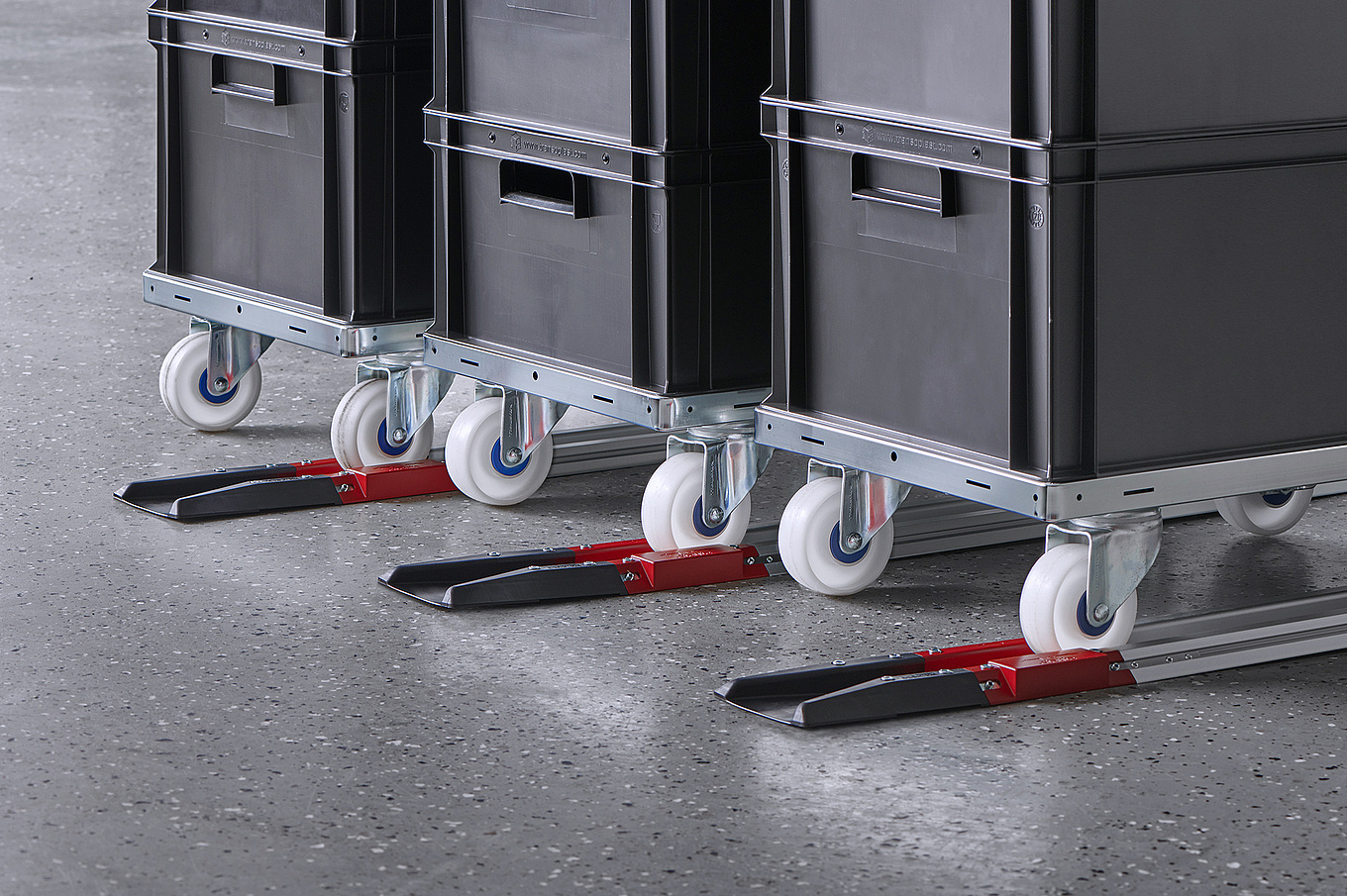The wireless dolly sensor registers the movements of full or empty dollies on monorail tracks. In this way, if stock levels in the material supermarket are low, for example, a requisition note can be triggered in the IT system, considerably improving the reliability of supplies to the production. Data transfer in real time simultaneously leads to a reduction in the time needed to procure new materials, and therefore also to a significant increase in the efficiency of the replenishment process.
Dolly station systems facilitate the interim storage of material stocks in production halls according to the "first in first out" principle (FIFO). The challenges facing a station system or material supermarket are similar to those of a flow rack: changes in the stock must be recognised and communicated early so that supply shortages can be prevented. With the RF DSENS dolly sensor, the movements of full or empty trolleys can be detected automatically, enabling transport orders to be triggered in real time.
The wireless dolly sensor is mounted on the monorail track and captures dolly movements. Through the assignment of individual supermarket tracks to the materials, stock levels are immediately apparent, enabling workers to pre-consign the required quantities for production early on. Since the sensor recognises the direction in which the dolly is facing, an automatic distinction can be made between leaving and approaching dollies. Via the Sensor Bridge software it is possible to configure individually whether the sensor should detect one or two axles before remotely transmitting the counting process. The wireless ID of the sensor guarantees a clear assignment of the dolly position.
The RF DSENS can be mounted on commercially available 40 mm FIFO monorail tracks, screwed or glued to the track connectors.
